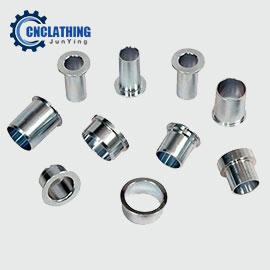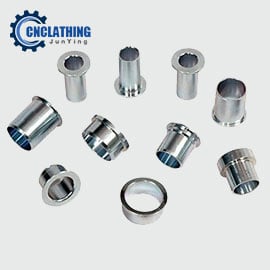Both the process of selecting connectors and the process of selecting CNC machining for aviation plugs are two separate processes, but there are some correlations between them. In particular, the choice of connectors as well as the method of picking CNC machining for aviation plugs. The following paragraphs will now go into greater detail regarding both of these aspects:
1. The following are the considerations that go into choosing the appropriate method of CNC machining for an aviation plug:
- The selection of materials:In order to fulfill the requirements of aviation applications, select suitable materials such as aluminum alloy, stainless steel, and other similar options. It is important to think about the qualities of the material, such as how heavy it is, how strong it is, and how resistant it is to corrosion.
Design in CAD:Utilizing computer aided design (CAD) software will allow you to create the geometry and dimensions of aviation plugs. Make it a point to check that the design adheres to the prerequisites and the specifications.
- Quality control: Strict quality control measures are put into place in order to ensure that the machined aviation plugs satisfy all of the requirements. Measurements such as these include the utilization of precision measuring instruments for dimensional measurement and the inspection of surface quality.
2. Determine the functional requirements of connectors, such as electronic signal transmission, power supply, and environmental sealing, in accordance with the characteristics of aviation applications before selecting a connector.
- Requirements, parameters, and parameters: Take into consideration the various standards and specifications used in the aviation industry, and select connectors that are compliant with the relevant requirements, such as the Aerospace Industry Standards (AS) and the Avionics Manufacturing Association (AECA) standards. In addition, take into account the various standards and specifications used in the aviation industry.
-Determine the type of interface that is required, which may include on-board connectors, ring plugs, rectangular plugs, or any one of a number of other possible options. Make sure that the components and systems that are already in place are compatible with the connectors by checking their compatibility.
- Ease of maintenance and replaceability: When selecting connectors, it is important to take into account how simple it is to perform maintenance on them. Additionally, when selecting connectors, it is important to select connectors that are easy to remove, install, and replace in order to reduce the amount of money spent on maintenance and repairs.
Which other categories of aviation components call for the utilization of CNC machining?
As a result of the aviation industry's requirement for high precision and intricate forms, a significant portion of the components have to be machined using CNC (which stands for computer numerical control). Listed below are some examples of common aerospace parts that must be machined by a computer numerically controlled machine:
2. Aircraft structural parts: such as the fuselage frame, wing SPAR, support structure, and other such structural parts, these structural parts need to have CNC machining done to them in order to obtain accurate size and complex shape so that they can meet the strength and structural requirements of the aircraft.
4. Components of the device used to land, such as the landing gear, wheels, brake drums, and other items of a similar nature. In order to keep their strength and durability despite being subjected to heavy loads and vibrations, these components need to be precisely machined by a CNC machine. This is necessary to ensure that they continue to function properly.
5. Internal components: such as the seat structure, instrument panel, wall panel, and so on within the aircraft cabin, these need to meet the requirements of aviation safety and comfort, which means that accurate processing and assembly are required. These internal components are located within the aircraft.
6. The aviation industry makes extensive use of a wide variety of connectors and fasteners, such as, among other things, bolts, nuts, rivets, and studs. These components are required to be precisely machined by CNC in order to ensure the dependability and performance of the connection.

